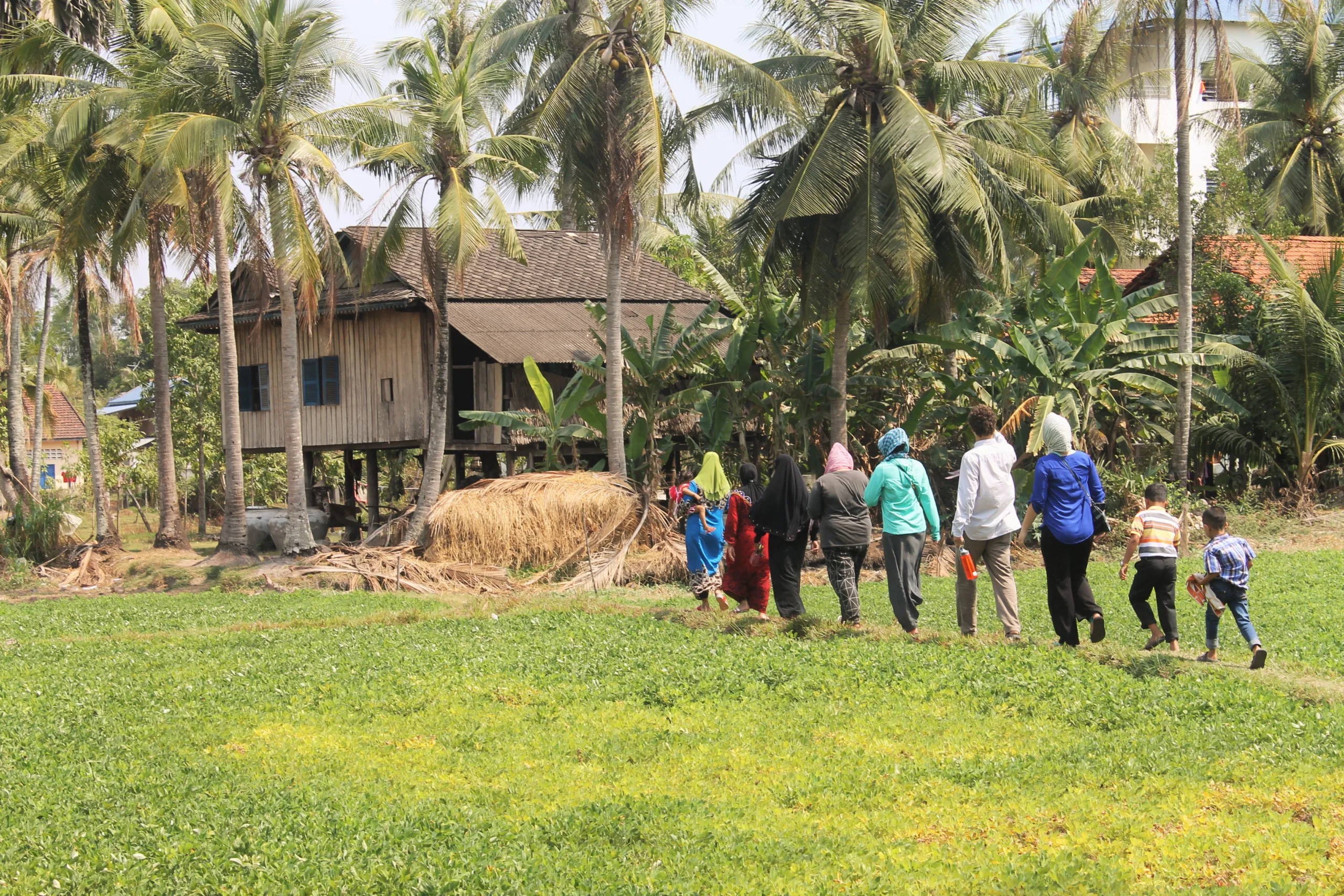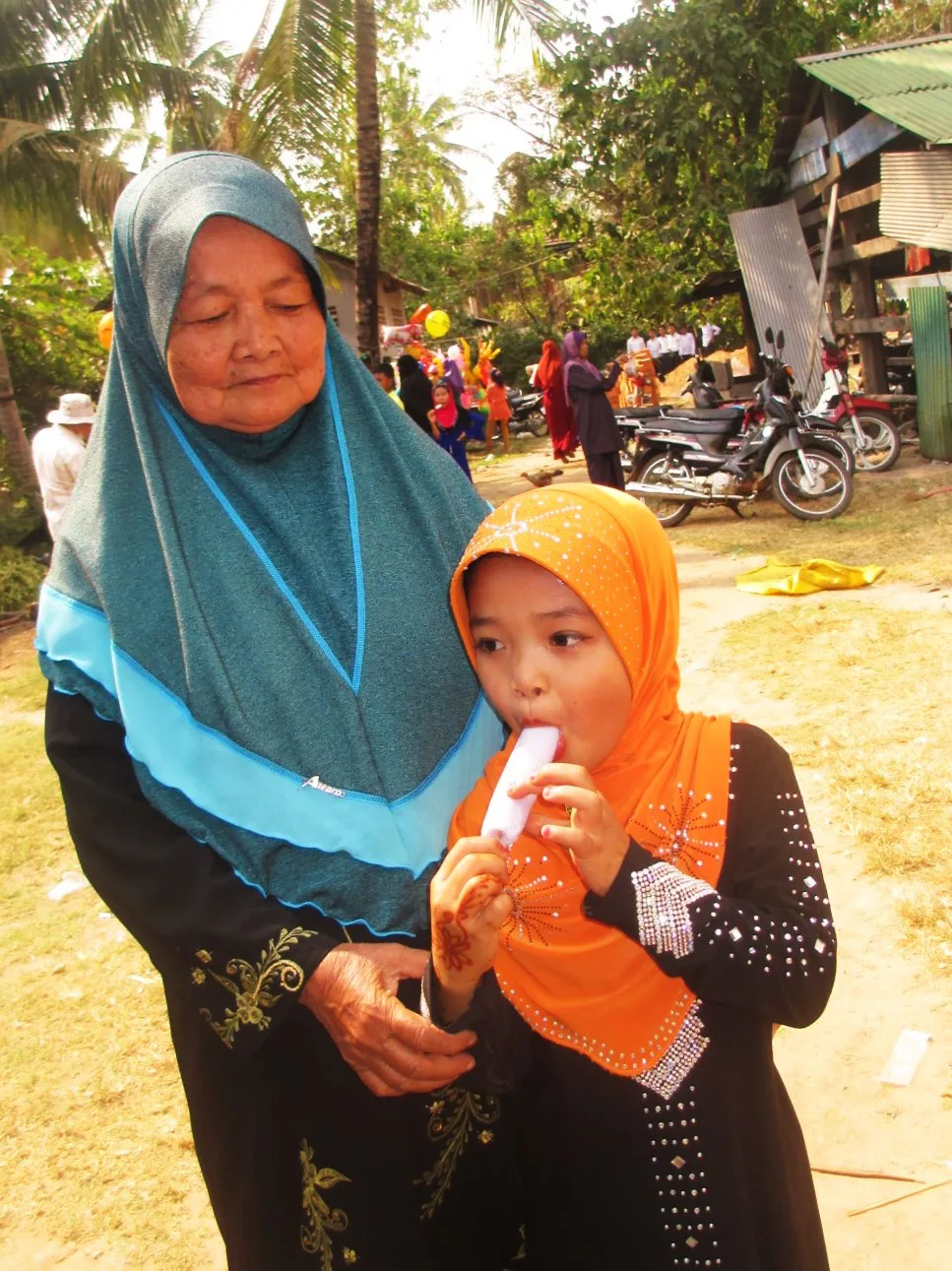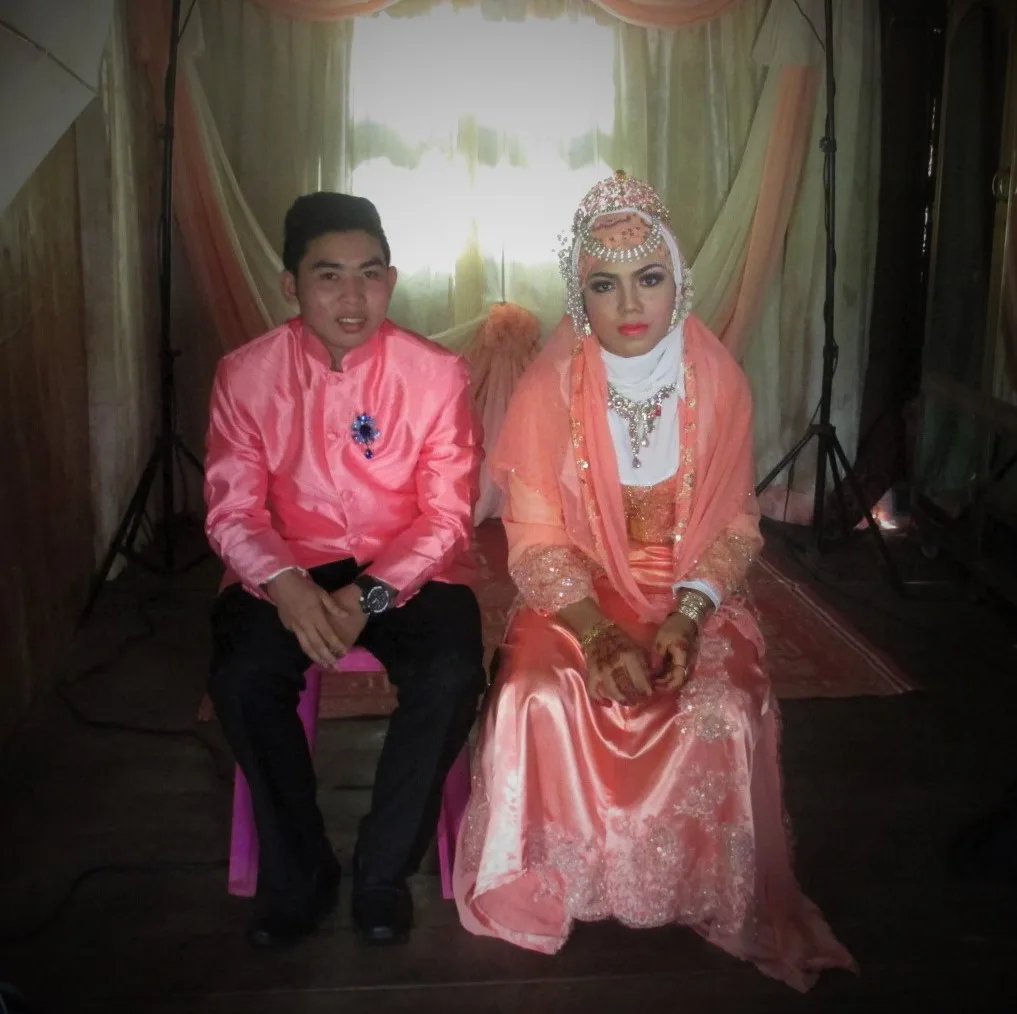The Fish Are Returning
One of Cambodia’s ongoing challenges is finding a balance between the needs of natural resource-dependent rural communities and preserving or restoring biodiversity. One approach to this challenge is community-based natural resource management, and to see this in practice we visit a community fishery project in coastal Kampot. Since 2009, over 2000 villagers from three villages have been involved in restoring and protecting a 337 hectare mangrove belt beside their ancestral villages. They have recently added an ecotourism component to their site, building small thatch bungalows in the estuary for guests who wish to participate in planting mangrove saplings.

The head of the community fishery is a courageous Cham man, an ethnic Muslim named Simm Himm. Students have the privilege of listening to him describe the history of the project and the challenges and successes the villagers experience.
As Simm Himm tells it, the villagers began to notice that their futures were in trouble in 2006. The mangrove belt lining their estuary and the nearby coastline was being increasingly degraded by cutting for charcoal, and the area was becoming a dumping ground for local waste. Fish stocks had massively declined and many fishers had moved away to find alternate livelihoods. Moreover, although they had used the area for generations, the villagers were increasingly worried that private developers would come in and seize the land. So they joined together to protest and ended up being authorized by the Ministry of Agriculture, Forestry and Fisheries to manage the area. Today, Simm Himm reports with pride, fishers have returned and are able to catch fish again—not as much as in earlier eras but more than during the dark times. The fish are returning as the mangroves are restored.


Although the fishery does have a core zone that is a no use area, the goal of the community is to protect the mangroves so that fishers—their generation and the children who come after them—can have better livelihoods. In the first years of the project, a mangrove nursery was created, and villagers were persuaded to come out en masse and plant 5000 mangroves at a time. Now this planting is done largely by “voluntourists,” groups like ours who come and stay and purchase mangrove saplings that we are taken out to plant.
The main task remaining for the villagers is patrolling their community zone and warding off illegal users. Ten to twenty men go out together once a week, and together they confront any illegal activity. Most offenders, we are told, come from other villages. Offenders are initially warned and educated. Second-time offenders are asked to sign a contract and after that repeat offenders are taken to the local police station, and their illegal gear is confiscated and destroyed. It is at times a dangerous business—the patrollers have had their boats deliberately rammed and have been struck with oars, which is why they patrol in large numbers, to add to their strength.
Community members are permitted to remove dead wood from a community use zone, and to carry out family-scale fishing practices with traditional gears. Our students often encounter families with small shrimp traps, trawling through the tidal flats catching translucent shrimp by hand. During our stay here, students experience the rhythms of coastal fishing life—at night, villagers hunt with torches in a section of unprotected mangroves and early each morning, before dawn, we are awakened in the bungalows by the motors of the fishing boats returning from nights at sea.
On our last day at the project, students conduct a livelihood interview with a small group of Cham villagers. To ensure that the women may speak freely, students divide into two groups and meet men and women separately. The three women in our interview were all doing beadwork while sitting on a kre, a raised bamboo bed, in the shade beneath the stilted house. Although none of the women are involved in fishing, they explained quietly to us how restoring the mangroves are improving their family’s livelihoods.
Five years ago, before the community fishery began, two of their three husbands had left the village to fish in different provinces. One was on a deep sea fishing boat, another was working as a guard on a plantation. The women remained behind to tend their homes. Now, as the mangroves return and the fish have renewed space to breed, all three men have returned to the village and to traditional fishing practices.
Although the women earn some extra money in wedding season by sewing beads onto blouses worn at weddings, the households were highly dependent upon fishing for their income. None had rice fields, and all spoke of simply having small household gardens in the rainy season and a few fruit trees. None of the women wanted their children to be fishers. The work is physically exhausting, they explained, and sometimes men are lost at sea in storms.
As the interview drew to an end, one of the women gestured into the air and said, “Can you hear the music? There is a wedding this afternoon. If you want to see Cham people in traditional dress, you should come!” Attending a wedding was not part of our field trip plan, but when asked who would attend if it were possible, a sea of hands shot up into the air.
At two o’clock that afternoon, a long line of SFS students and staff walked single file through the village with our three women hosts to the wedding. We were unexpected but warmly welcomed. The bride and her husband were cloistered in an upstairs room for the first day of the wedding, while hundreds of guests ate and talked below. Our group was ushered into the crowded upper room and offered rice and coconut sweetened with palm sugar. Elderly women encouraged our students to take photos with the long-suffering bride and groom. We paid our respects and returned to the village below, where a carnival-like atmosphere prevailed and we were introduced to the mother of the bride. It struck me that the progress of the community fishery was evident even in this unexpected cultural experience. The groom had come from another province to live in the bride’s home village, a village that it is no longer necessary to leave in order to live, and in that simple fact lies hope.

Related Posts


Alumni Reflections: Stories of the Return to Kenya
